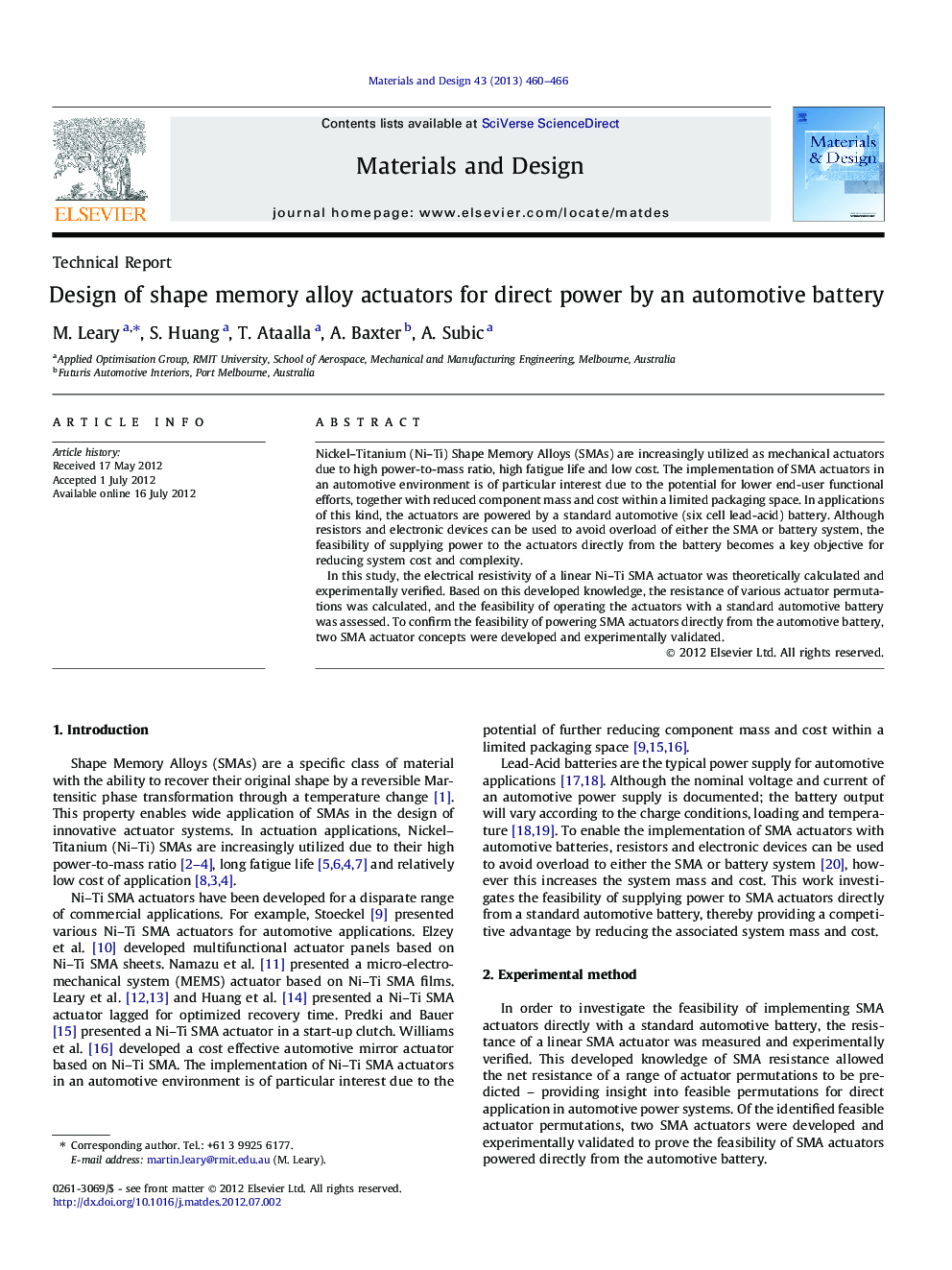| Article ID | Journal | Published Year | Pages | File Type |
|---|---|---|---|---|
| 830432 | Materials & Design (1980-2015) | 2013 | 7 Pages |
Nickel–Titanium (Ni–Ti) Shape Memory Alloys (SMAs) are increasingly utilized as mechanical actuators due to high power-to-mass ratio, high fatigue life and low cost. The implementation of SMA actuators in an automotive environment is of particular interest due to the potential for lower end-user functional efforts, together with reduced component mass and cost within a limited packaging space. In applications of this kind, the actuators are powered by a standard automotive (six cell lead-acid) battery. Although resistors and electronic devices can be used to avoid overload of either the SMA or battery system, the feasibility of supplying power to the actuators directly from the battery becomes a key objective for reducing system cost and complexity.In this study, the electrical resistivity of a linear Ni–Ti SMA actuator was theoretically calculated and experimentally verified. Based on this developed knowledge, the resistance of various actuator permutations was calculated, and the feasibility of operating the actuators with a standard automotive battery was assessed. To confirm the feasibility of powering SMA actuators directly from the automotive battery, two SMA actuator concepts were developed and experimentally validated.
► We model Ni–Ti SMA actuators directly powered by a standard automotive battery. ► Feasible permutations for direct power are identified and confirmed experimentally. ► 0.5 mm diameter SMA of 225 mm length or larger is feasible for direct power. ► The feasibility of 0.25 mm SMA is greater, although the actuation force is lower. ► Prototype actuators are developed for long-stroke and short-stroke applications.
